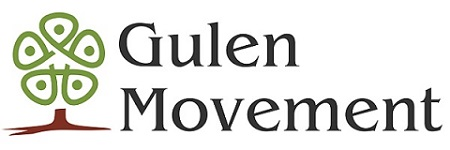
Dr. Joseph Stoutzenberger*
When I heard that the theme of this conference was to be “The Beloved Community,” I decided to revisit Fethullah Gulen’s writings about Sufism since love is so central to that expression of Islam. Sufism entails spiritual training that leads to self-purification so that one can experience God’s love for oneself the practitioner, and out of that realization of God’s love he or she goes out and loves in return—God, of course, and other people as well. As I read through Gulen’s two volumes, I realized that he was not writing about Sufism as if it were practiced by a group of specialists who live in another time and place. Rather, he was speaking about qualities that all of us should strive for.
Gulen never separates love of God from living a moral life. Sufism isn’t just for an elite; it’s for everyone. Gulen believes that Sufism offers a vision of how people of good will should and must act. He doesn’t want Sufism to be understood as a form of mysticism, as if the goal is to bask in God’s love without any implications for engaging in good works. Sufism entails constant self-renewal and self-purification that in Gulen’s words involves, among other things,
“Trying to eradicate injustice and support justice and what is right” (1).
So Gulen connects love, which is the central focus of Sufism, with justice. At times I hear justice downplayed in relationship to love, as if it is inferior to love or at best “love’s minimum.” True lovers don’t need to concern themselves with justice, do they? Love is a response to a higher calling; it’s the attitude of the angels. “Justice” responds to a much less exalted motivation. Why is justice dismissed or relegated to an inferior status in relation to love?
For one thing, justice involves rights and obligations, whereas love is a gift freely given. In that sense, love and justice appear to be contradictory. Doing justice is compulsory, a requirement; it’s what is expected of all of us. Love, on the other hand, is extra. It’s unexpected, a grace bestowed upon us or given freely by us. As the phantom of the opera discovered, we can’t force or oblige love. Justice, on the other hand, is an obligation.
When lovers see someone without adequate food, they gladly share whatever they have without thinking. Justice, on the other hand, says: “It’s not right that someone has more than enough to eat and another has not enough. We must do something about that.” Thus, love sounds much more lofty and pure than justice. Justice is more nitty-gritty, less glamorous and uplifting than love. People have a right in justice to certain minimum requirements, such as a right to life and those necessities needed for life. Out of a sense of justice, those of us who have the means need to do whatever we can to see to it that everyone has sufficient nourishment, clean drinking water, adequate health care, and shelter that at least meets minimum standards for survival. Seeing to it that all people have basic necessities available to them is a matter of justice, not an “extra” for the beloved community; it’s the ordinary, not the extraordinary. There’s a temptation to overlook justice when we speak of love, perhaps partially because it is so unglamorous. Gulen does not make that mistake.
What, then, does Gulen mean when he says that trying to eradicate injustice and support justice are necessary characteristics of Sufism? I suggest that he means that Sufis, and the rest of us, need to examine conditions that exist in our world in light of justice as we go about seeking to experience God’s love and to live a loving life. In “Toward a Global Civilization of Love and Tolerance” Gulen speaks about “an ideal society” that can be created by people who “courageously devote themselves to ridding the world of injustice and tyranny….they examine all that occurs like a scientist in a laboratory…they dedicate their lives to humanity and leave a much better world for coming generations” (2). So Gulen sees love as asking the difficult justice questions: Are the basic needs of people being met in the current arrangements that exist in our world community? If not, what can we do about them? Justice as an expression of love requires the self-examination of a Sufi as well as the social examination of a beloved community.
I frequently run across statistics about what percentage of the world’s resources are controlled and used up by the top one percent and then the top five percent of the population as opposed to the miniscule amount scattered among the bottom fifty percent, and so forth. A number of analogies have been used to bring the world situation down to scale so that we non-social scientists can comprehend it better. I particularly like the analogy of an ocean liner. If you saw the movie, Titanic, you might recall the contrast made between the experience of the first-class passengers on board and the third-class passengers relegated to the bowels of the ship, even though in typical Hollywood fashion the third-class passengers are portrayed as having a grand old time despite their restrictions and deprivations. If you recall, when it is clear that the ship is about to sink lifeboats are sent off filled, or in some cases not even filled, with first class passengers while gates are locked to prevent third-class passengers from even having a chance to survive.
The ocean liner analogy provides a telling representation of our world even without the irreparable damage of an iceberg thrown in. On our ocean liner earth there are a few first-class, some second-class, and the vast majority third-class passengers. Less than one-fourth of the passengers travel first class. Nonetheless, they have reserved eighty-five percent of the resources on board for themselves while the third-class passengers have barely enough to survive and frequently not even that. In many cases the third-class passengers are providing goods and services for the first-class passengers without reaping any of the benefits themselves. First-class passengers even take up a lot of precious space with the cattle they insist on bringing along and clog up the ventilation system with exhaust from high energy-consuming modes of transportation.
Members of a beloved community live and function in this world of inequalities and vast numbers of people who lack basic necessities, never apart from it. Love calls us to face these realities. Justice represents an examination of the concrete realities in which people live and implies a particular approach to addressing them. In a sense, then, justice is not love’s minimum. Rather, it expands love beyond the one-to-one context that we typically associate with love. Justice takes the spirit of love and applies it to a broader context, specifically to the socio-economic realities of our current world situation. When people are hurting, it takes more than the powerful extending a helping hand to those who are in need. Justice aims to transform social arrangements so that people who lack power and privilege grow in power and have available opportunities to benefit from the array of resources and technological advances often reserved for the privileged. In terms of our theme, justice looks to create a world in which all people can be both loved as well as lovers.
To bring about such a change requires examining the structures and institutions of a society. The aim of justice is not to destroy social structures but to transform them in light of the question: How are all people helped or hurting because of the way our institutions function? The way we deliver health care, move people through the criminal-justice system, provide education, make available the means for a livelihood, and administer banking and financial arrangements are all necessary elements of a society; and all of them need constant scrutiny from a justice perspective. Justice asks: How can we make our dominant systems not systems of dominance? How can we make them the wellspring for a beloved community?
This type of social analysis can feel less rewarding than one-on-one acts of love. Without this type of social analysis the beloved community is unlikely to become inclusive of the very ones most in need of love.
Last fall I told a story at a conference at Temple University that expresses well how justice goes beyond what we normally think of as the work of love. It would be helpful to retell the story as part of our discussion today about the beloved community.
Once upon a time there was a small village on the edge of a river when one day a villager noticed a baby floating down the river. She quickly jumped into the water and swam out to save the baby from drowning.
The next day she was walking along the riverbank and noticed two babies in the river. She called for help, and both babies were rescued from the currents. The following day four babies were seen caught in the turbulent waters. And then eight, then more, and still more.
The villagers organized themselves quickly. Rescue squads were soon working twenty-four hours a day. But each day the number of babies floating down the river increased.
Rescue squads were now snatching many children out of the water. Groups prepared formula and provided clothing for the chilled babies. Many people were involved in making clothing and blankets. Still others provided foster homes.
While not all the babies were saved, the villagers worked tirelessly and felt they were doing well to save as many as they did. One day, however, a villager raised the question: “But where are all these babies coming from? How are they ending up in the river? Why? Let’s organize a team to go upstream and discover the source of the problem.” The elders of the village countered: “But if we go upstream, who will operate the rescue operations? We need every concerned person here.”
“But don’t you see,” cried one love voice. “If we find out why they are in the river in the first place, then we might be able to stop the problem and no babies will drown. By going upstream, we could eliminate the cause of the problem.”
“Our job is saving babies,” decided the elders, “not expeditions upstream. We must continue our good work.”
And so the number of babies in the river increases daily. Those saved increase, but those who drown increase even more (3).
This story contrasts two ways that people can express love in our world today, what we might call works of mercy or charity and the work of justice. It suggests that if we are serious about being a beloved community, then we need to concern ourselves with going upriver as well as dealing with immediate needs of people.
At the recent annual dinner of the Philadelphia Dialogue Forum two speakers addressed the issue of hunger. The second speaker at the Dialogue Forum dinner was Nur Sumeyye Kalyoncu from the organization Kimse Yok Mu?, a Gulen-inspired humanitarian relief organization. This organization, loosely translated into English as “Is anybody there?” began in 2002 as an outgrowth of the service commitment of the Gulen movement. Kimse Yok Mu? has been involved in that I would characterize as disaster relief—re-building schools and hospitals in Pakistan and Haiti after the earthquakes there, helping refugees in Darfur, and most recently supplying food and water to people displaced by the devastation in Japan immediately after the recent earthquakes and tsunami. However, the organization’s website features another program different from these disaster-relief ones. It says that from the beginning a core program has been the “Sister Family Aid” program. This program links wealthy and middle-class families with needy families. The model serves a number of purposes. For one, it avoids the “faceless charity” approach representative of so many organizations. It involves “haves” and “have nots” working together. I can’t imagine that the families in need of financial assistance don’t also offer something important to the families with whom they are twinned so that giving and receiving is a two-way process. I imagine that a hands-on program such as this one enhances (i) a sense of dignity for the needy families, (ii) a spirit of humility for the helping families, and (iii) mutual respect between the two. Although the program doesn’t necessarily tackle social institutions and the impact they have on people’s well-being, at least for the families involved it likely leads to long-term transformations. It aims to provide not a band-aid but a cure.
Jesuit Father Thomas Michel spoke about Kimse Yok Mu? at a Gulen conference at Georgetown University in 2008. He compared it to other relief organizations sponsored by religious groups, such as Catholic Relief Services. I would like to make two observations in this regard so that we don’t lose sight of Gulen’s call for justice in the work of a beloved community. For one thing, the American Catholic Church has two organizations whose goal is helping people in need. Catholic Relief Services traditionally follows a charity model and serves people in that capacity worldwide. The American Catholic Church has another organization called the Catholic Campaign for Human Development, which applies more of a justice approach to its programs. On its website it says that it “invests in community-based solutions….We support self-sufficiency and self-determination as the best strategies for change. We support projects that break the cycle of poverty for good.” I recently heard the head of Catholic Relief Services saying that it too has decided to focus its efforts on the question: How does this project empower local people and support long-term social change? He mentioned that too often CRS invested time and money in projects that after they left became dismantled and brought about no long-term changes.
I suggest that when we envision the beloved community we use justice to help us evaluate how effective our expressions of love and compassion are for those mired in unjust social arrangements that hinder their becoming full participants in the loving community we all aspire to achieve.
* Dr. Joseph Stoutzenberger is Professor of Religious Studies at Holy Family University in Philadelphia, PA, and presented this paper at a conference titled “Building the Beloved Community: An Interfaith Dialogue”, which was organized by the Interfaith Dialog Center, NJ on May 6, 2011.
Notes:
1- Sufism, Vol. 1, pages 2-3
2- Somerset, NJ: The Light, 2004, pages 129-30
3- adapted from Inter-Religious Task Force for Social Analysis, Must we Choose Sides? [1979], pages 114-15. Also found in Joseph Stoutzenberger, Justice and Peace, Dubuque, IA: Brown-ROA, 2000, page 68.
Tags: Fethullah Gulen | Fethullah Gülen's philosophy | Peacebuilding | Sufism |Related Articles

What you should know about Hizmet
There are three things non-Muslim Poconovians should know about Gülen’s movement. First, Gülen rejects a jihad of violence as promoted by the Taliban, Al-Qaeda and ISIS in the…

Forms of Islam: Popular Islam – Hizmet and The Gülen Movement
Traditional Islamic values of piety, social commitment, tolerance, social justice and moderation in Islam find themselves overwhelmed in the current fray of international violence, war, injustice, fanaticism, and…

Muslims Must Combat the Extremist Cancer
It isn’t fair to blame Islam for the atrocities of violent radicals. But when terrorists claim the Muslim mantle, then they bear this identity, if only nominally. Thus…
